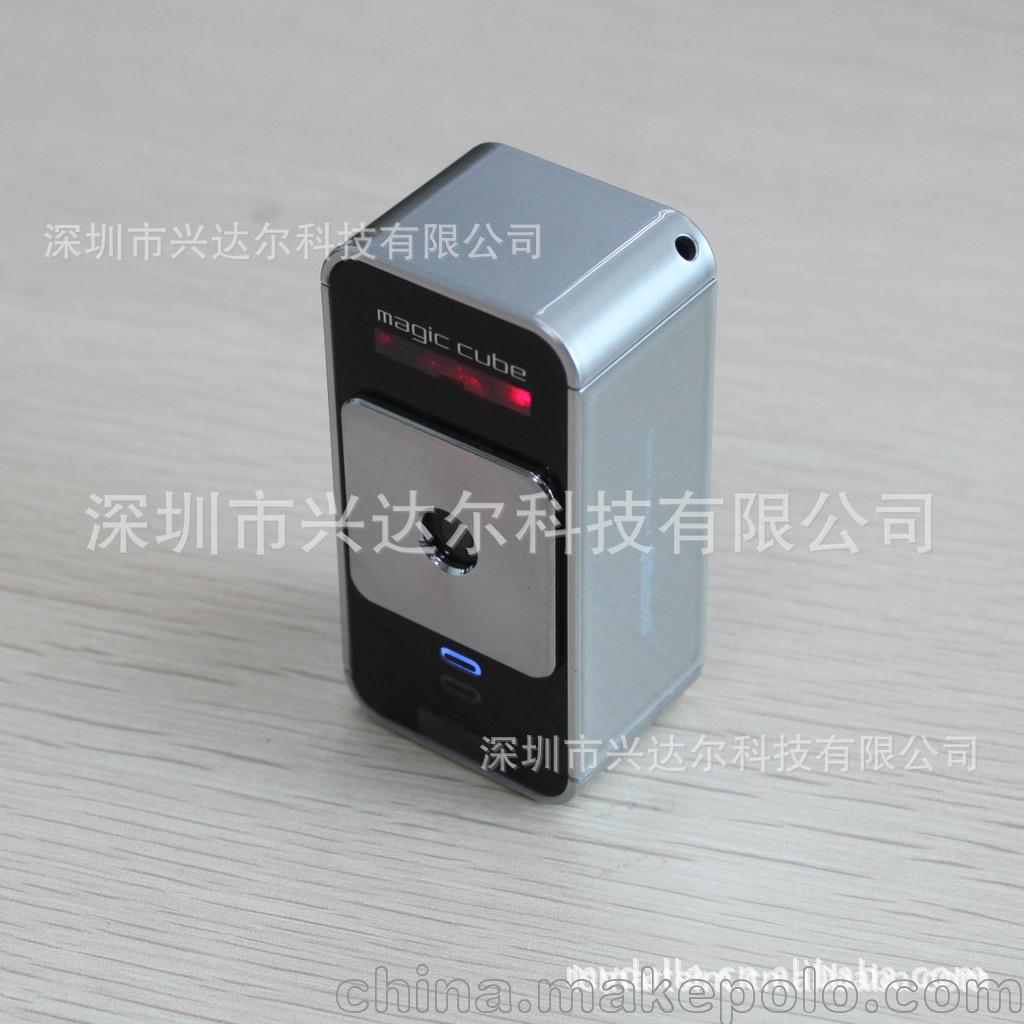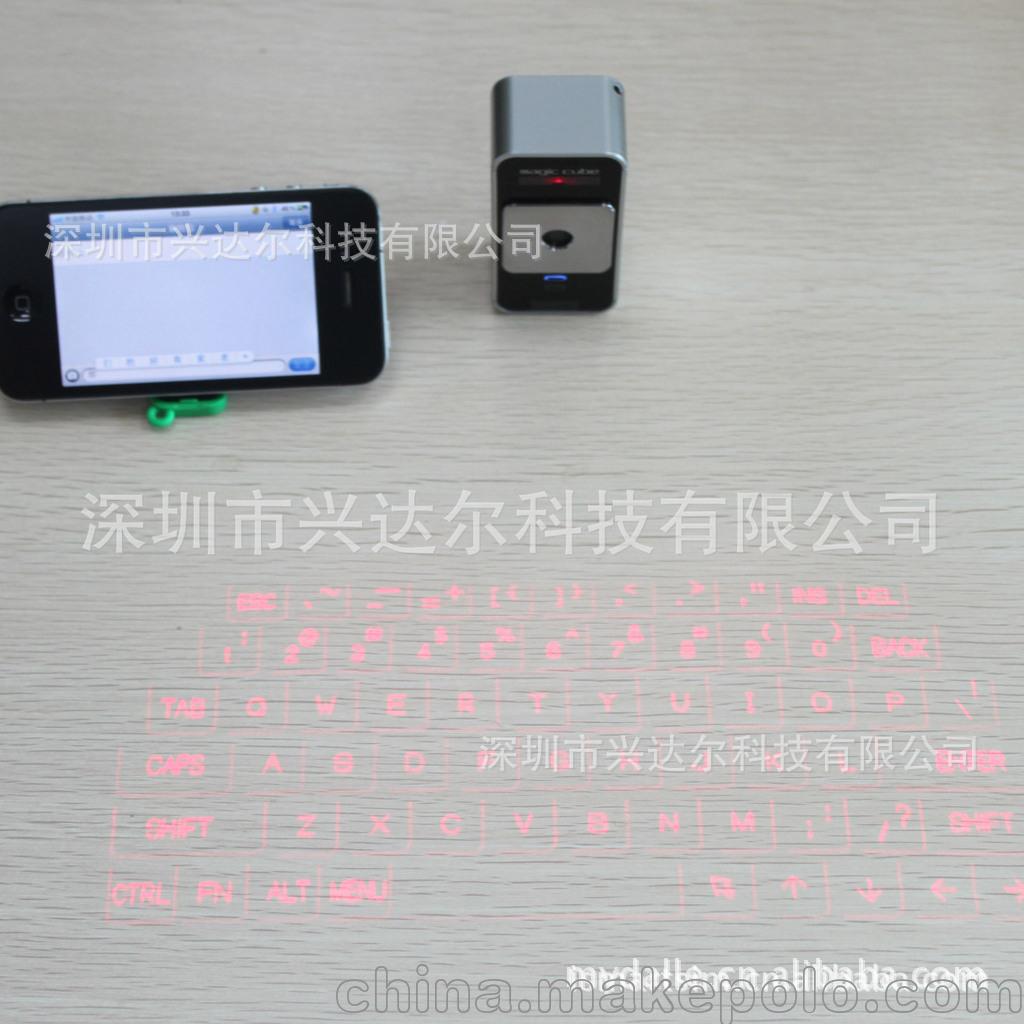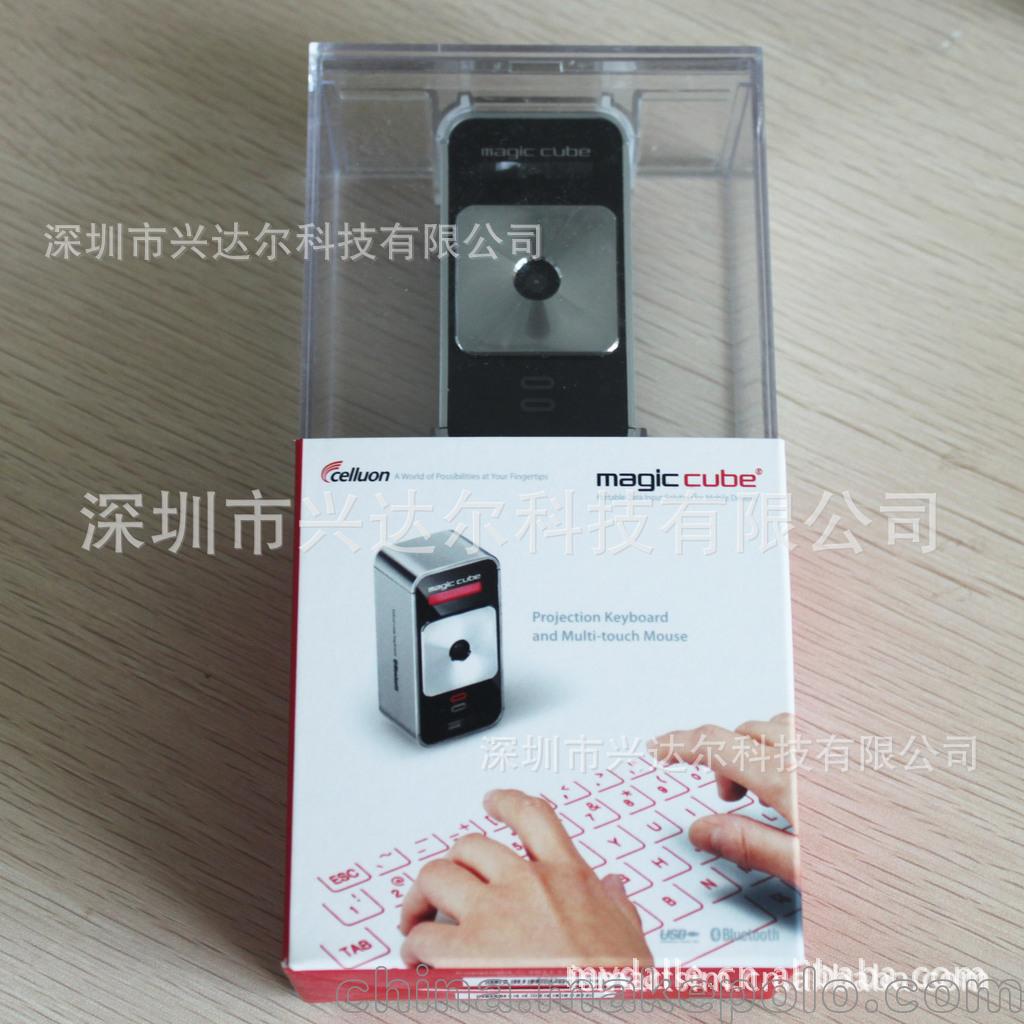深圳兴达尔有限公司是韩国赛路恩授权的大陆经销商,有正规授权书,并承担整个大陆的售后服务工作,欢迎各地有实力数码配件代理商做省市代理,对于本公司未授权的其他网络经销商,本公司一经发现,即以侵权处理,本公司保留追究知识产权的权利。举报电话15728119032







| Description | The Virtual Laser Keyboard leverages the power of laser and infrared technology and projects a full-size keyboard onto any flat surface. As you type on the laser projection, detection technology based on optical recognition enables the user to tap the images of the keys, complete with realistic tapping sounds, which feed into the compatible Bluetooth-enabled PDA, Smartphone, laptop or PC.
Unlike many small snap-on keyboards for PDAs, the Virtual Laser Keyboard provides a full-size QWERTY keyboard. It is also smaller and more convenient to use than the folding-type keyboards made by some manufacturers and similar to them in functionality. There are no mechanical moving parts whatsoever in the Virtual Laser Keyboard. It provides a projected image that is the perfect portable input device for PDAs. It's similar in responsiveness to regular keyboards.
The light weight device weighs two ounces and is similar in size to a disposable cigarette lighter. The Virtual Laser Keyboard includes a self-contained, rechargeable lithium ion battery. It provides the Virtual Laser Keyboard with its own internal power supply, so it doesn't drain any battery power from the PDA or PC. The battery lasts two to three hours, more than enough time to do some instant messaging and SMS messaging from the handheld device or to update calendar and phone book entries.
|

| Technology |

Step 1: Template creation (Projection Module)
A template of the desired interface is projected onto the adjacent interface surface. The template is produced by illuminating a specially designed, highly efficient holographic optical element with a red diode laser. Note: the template serves only as a reference for the user and is not involved in the detection process. In a fixed environment, the template can just as easily be printed onto the interface surface.
Step 2: Reference plane illumination (Micro-illumination ModuleTM)
An infra-red plane of light is generated just above, and parallel to, the interface surface. This light is invisible to the user and hovers a few millimeters above the surface. When the user touches a key position on the interface surface light is reflected from this plane in the vicinity of the key and directed towards the sensor module.
Step 3: Map reflection coordinates (Sensor Module)
Reflected light from user interactions with the interface surface is passed through an infra-red filter and imaged on to a CMOS image sensor in the sensor module. Custom hardware embedded in the sensor chip (the Virtual Interface Processing CoreTM) then makes a real-time determination of the location of the reflected light. The processing core can track multiple reflection events simultaneously and can thus support both multiple keystrokes and overlapping cursor control inputs.
Step 4: Interpretation and communication (Sensor Module)
The micro-controller in the sensor module receives the positional information corresponding to the light flashes from the sensor processing core, interprets the events (e.g. keydown, keyup, mouse or touchpad control etc..) and communicates them through an appropriate interface to external devices.
|
|
| Product Specifications | | Keyboard Projection | | Light source | Red diode laser | | Keyboard layout | 63 key / full sized QWERTY layout | | Keyboard size | 295 x 95mm projected keyboard size | | Keyboard position | 60mm from VKB unit | | Required Projection surface | Non-reflective, opaque flat surface | | Visibility | Good contrast up to 600 lux ambient illumination | | | | | Keyboard Sensor | | Ambient illumination | Works under all standard indoor illuminations up to 600 lux | | Detection | Rate Up to 400 characters per minute | | Detection algorithm | Multiple keystroke support | | Effective keystroke | Approximately 2mm | | Operating surface | Non-reflective, opaque flat surface | | Visibility | Any firm flat surface with no protrusions greater than 1mm | | | | | Bluetooth | | Bluetooth Spec | Bluetooth v1.1 class 2 | | Bluetooth Profile Supported | HID and SPP | | Range of Frequency | 2.4 GHz Spectrum | | Transmission range | 9m | | Number of supported passkeys | 5 | | | | | Electrical | | Power Source | Integrade, 3.6V rechargeable lithium-ion battery | | Battery Capacity | >120 minutes continuous typing | | Charge Method | Included 100-240V AC Wall Adapter | | | | | Dimensions | | Approximately 35 x 92 x 25mm (1.38" x 3.6" x 1") |
Magic Cube 作为韩国CELLUON公司最新上市的无线光学投影虚拟键盘,解决了上一代的CL850虚拟键盘只能应用于PC,塞班,PocketPC ,PLAM操作系统使用的不足,可以为iPad/iPhone/Android2.2提供光学虚拟键盘输入方案,给你绝对不一样的体验,让您的苹果iPad/iPhone,谷歌Android更酷更炫。目前只有银色
Magic Cube使用了Celluon公司开发的最新感应器模块。利用这些感应模块,Magic Cube可以定位操作者手指的位置和追踪手指的移动轨迹,从而检出操作者的输入。同时可以支持USB接口和蓝牙,与移动设备的连接可以说是非常便利。


Magic Cube由A投影元件先投影出键盘
此时,C会同时发射出红外线
因此当手指头按下A投影片键盘时,同一时间会阻断C红外线
造成反射,这时候B感知器就接受到反射的座标
这样一來,就会知道使用者按下的键是什么了
官网表示可以每分钟接收400次敲击的识别。 下面是Magic Cube便捷的使用操作
功能与优点
可便携性:体积小,易于集成组件,其紧凑的尺寸,低功耗,使制造商还能够结合投影键盘直接到装置中,没有显着增加的大小或功率消耗的装置。
工作效率:快速和准确的数据输入,大键和熟悉的布局,投?凹蹋檬淙胨俣却笥?50个字每分钟误差率相似,即一个标准的物理键盘,成为移动输入的新标准。
简单易用:投影键盘为用户提供了一个舒适,近疲劳较少的方式输入数据到自己的移动设备。投影键盘,还可以帮助降低人体工程学的相关风险因素,与其他投入的替代品,减少紧张手腕。
灵活性:鼠标和键盘双重功能,由于投影键盘观感芯片组作品由光学跟踪手指的动作,而不是登记的物理交换机的普通键盘,用户可以使用同一个表面上,为双方的键盘数据输入和鼠标功能。 适用人群:很多朋友都听说过虚拟键盘,并不会对其感到陌生,是一款个性化的发烧产品。时尚达人必备!~
产品卖点:最新款Celluon Magic Cube投影键盘新颖独特,轻巧便携,又可适用于台式机、笔记本,手机等多种类型的设备,非常全面。 |














